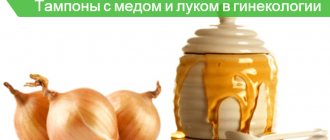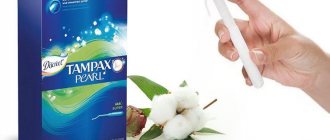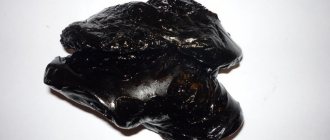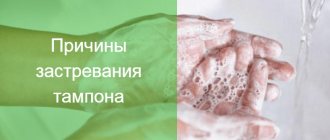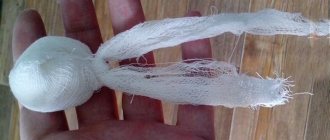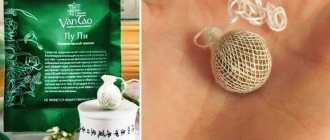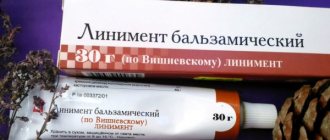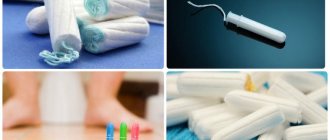Every woman experiences gynecological diseases in her life. Not all of them can be successfully treated. Doctors sometimes recommend traditional medicine recipes. Honey is a natural antiseptic. In gynecology, tampons with it are used for different situations. They improve blood circulation in the pelvis, have an anti-inflammatory effect and stimulate the immune system.
Features of use and indications
Therapeutic tampons are intended for the treatment of many gynecological diseases in acute or chronic forms. Medical devices have a local effect, as they are placed directly into the vagina: the active substances reach their target and penetrate the inflamed or affected areas. The big advantage is the minimal risk of side effects typical of oral medications.
Interesting video about Chinese tampons Beautiful Life, Clean Point
Use is indicated in the following cases:
- thrush (vaginal candidiasis);
- fibroids, myomas;
- bacterial infections and inflammatory processes in the internal genital organs;
- ovarian cysts;
- endometriosis;
- polyps localized on the uterine endometrium or in the cervical canal;
- adnexitis (inflammation of the appendages: ovaries and fallopian tubes);
- endometritis;
- vaginitis;
- some sexually transmitted diseases.
Sometimes the use is prescribed as part of complex therapy simultaneously with other treatment methods: taking medications, performing physiotherapeutic procedures.
Side effects and contraindications
Honey tampons have almost no side effects in gynecology. Allergic reactions rarely occur. A burning sensation, itching, and swelling are its manifestations. With such symptoms, the product is immediately removed and no longer used.
Despite their benefits, honey tampons have a number of contraindications. First of all, this is an individual intolerance to raw materials. Some women experience unpleasant symptoms after use: burning, itching, swelling, and microflora is disrupted. In this case, the tampon is immediately removed and no longer used.
The product should not be used during menstruation. At this time, the cervix is susceptible to various infections, and honey can cause heavy bleeding. It's better to wait until the discharge ends.
Since honey increases blood circulation in the pelvis, it should not be used for bleeding of unknown origin. Any such vaginal discharge is a reason to urgently contact a gynecologist.
Specialized ready-made tampons
On sale you can find ready-made specialized gynecological phytotampons made in China. There are two most popular and well-known products in this category:
- “Clean Point” (in Russian it sounds like “Clean Point”). It contains medicinal herbal ingredients: Chinese contis, pomegranate, angelica, turmeric, sophora, myrrh, cloves, camphor, acacia, ginseng, soflor and some other herbs. The shape is spherical, and the components are wrapped in mesh material, supplemented with thread for convenience. The product is used for most gynecological ailments, infertility, menstrual cycle and hormonal imbalances. Use is contraindicated during menstruation, during lactation and pregnancy. Side effects are possible.
- "Beautiful Life" Contains angelica, kusheng, motherwort, stemona, myrrh, dragon tree resin, Manchurian aralia, cnidum, Chinese contis, Himalayan lilac and other plants with medicinal effects used in Chinese medicine. Indications and contraindications are approximately the same as for the tampons described above. Before use, be sure to study the instructions in detail.
Consulting with a doctor will help you avoid unpleasant surprises!
Although Chinese tampons are classified as local herbal remedies, they are recommended to be used only after visiting a doctor and consulting with him.
Mechanism of action of mud tampons
The effect of such applicators on the body is entirely based on the healing properties of Tambukan mud. This natural, healing raw material contains many micro and macroelements, organics and acids that are useful for humans, which together constitute a powerful “fuel” for launching the healing mechanism. Infertility, and in particular, uterine hypoplasia, is underdevelopment, i.e. the inability of the uterus to become ready for fertilization. There are no conditions for its further growth. Silt sulfide mud, penetrating through the vagina into the periuterine area during the course of therapy, supplies the organ with the components necessary for development. And this is only one of the mechanisms of its work. There is also a neurohumoral component - this is the effect of the procedure on the body as a whole and directly on the central nervous system.
Based on pharmaceutical products
To make medicinal tampons, pharmaceutical products can be used, for example, the following:
- "Lidaza". The drug accelerates healing in the presence of internal sutures (postpartum tears, episiotomy), relieves swelling and improves tissue elasticity. A cotton-gauze swab is generously moistened in the prepared solution, which is then placed in the vagina. Procedures are carried out daily or at intervals of two days, the course lasts ten days.
- "Levomekol" fights bacterial infections, prevents tissue infection after surgery and cervical erosion. A layer of ointment is applied to a tampon, which is inserted into the vagina. The course lasts ten days.
- "Troxevasin" helps normalize blood circulation, strengthen blood vessels and capillaries, and improve the tone of the venous walls. Use the product effectively in the presence of cysts and hematomas of the genital organs.
- "Mumiyo." This remedy helps relieve inflammation in chronic and acute diseases, including vaginitis, adnexitis, and cystitis. Shilajit also helps get rid of polyps. Dilute 4 grams with 100 ml of water, moisten a medicinal swab in this solution.
What is its feature and purpose?
This treatment option is used in gynecology both at the very beginning of the disease and in the chronic form, as well as in the period after surgical intervention for recovery. This is a preventative against infections and inflammations. This option helps protect against pregnancy.
But, you need to understand that a medicinal tampon is not a hygienic one, which the fair sex uses during menstruation. Therefore, it is not recommended to use conventional hygienic tampons for treatment, impregnated with a medicine. The thing is that the purpose of hygiene products is to absorb moisture (menstrual flow), and medicinal products should have a different effect.
The vagina, or rather its mucous membrane, is very sensitive to the effects. Therefore, the use of such a drug has a positive effect not only on it, but also on the entire female reproductive system.
The product used will touch the cervix, and through it the medicine will penetrate into the organ, which will provide a therapeutic effect on the endometrium and appendages of the reproductive organ.
Folk remedies
Folk remedies can be effective. There are a huge number of them, so for convenience, the recipes are classified into categories taking into account indications for use.
Folk remedies
Candidiasis
Recommended recipes for thrush:
- Combine five drops each of tea tree, sea buckthorn, thyme and sage oils. After wetting in the mixture, the medicated tampon is kept in the vagina throughout the night and inserted before bed. Weekly therapy is carried out.
- Chop the Kalanchoe leaves in any way (for example, finely chop them with a knife), wrap them in several layers of gauze, and tie the ends of the material with a rope or thread. After placing the tampon in the vagina, it is left there for three hours, the procedures are carried out within a week.
- A decoction based on chamomile flowers and oak bark. Take a tablespoon of each type of raw material, add two glasses of water and cook over low heat for ten minutes. Strain the broth, saturate the medicinal tampon with it and leave it in the vagina for an hour or two. The duration of such therapy is a week.
- Honey. Soak a medicated tampon in it and place it in the vagina before bed.
Cervical erosion
For erosion, the following methods are highly effective:
- A head of peeled onion is baked in the oven for five minutes, cooled, wrapped in gauze or bandage and placed in the vagina overnight.
- Sea buckthorn oil. A tampon soaked in it can be left overnight for two weeks.
- Saline solution will eliminate inflammation and restore the mucous membranes of the neck. Take two tablespoons of salt per liter of warm water. A medicinal tampon soaked in such a mixture is placed in the vagina and changed every 12 hours for 14-16 days.
- Grind 10 grams of propolis, combine with 180 grams of olive oil. The composition is boiled in a water bath for fifteen minutes. The medicated tampon is soaked with a teaspoon of the product and left overnight. The course lasts at least a week.
Fibroids and fibroids
For these neoplasms, the following recipes for medicinal tampons are recommended:
- Mix chopped onion with honey. Wait for the juice to release and use it to soak a medicated tampon, which is kept in the external genitalia overnight. The course is long - 2-3 months.
- The saline solution used for erosion is effective, and the method will be the same.
- Propolis. Form a ball or cone out of it, wrap it in a bandage and insert it into the vagina at night every day for 10 days. Repeat 5 courses at intervals of 5 days.
Endometritis, endometriosis
Effective ways to use therapeutic tampons for endometriosis and endometritis:
- Tampons soaked in sea buckthorn oil with a therapeutic effect are used daily for at least ten days and left overnight.
- In equal proportions, combine natural flower or linden honey with pre-crushed aloe leaves (you can leave them in the refrigerator for a day to activate the substances). Moisten the medicated tampon generously in the released juice and place it inside the vagina.
- Dissolve half a teaspoon (2-3 grams) of mumiyo in 100 milliliters of warm water. Treat a tampon with the mixture, insert it overnight, and treat for ten days.
- Grind a tablespoon of flax seeds and add a glass of water, cook for 15 minutes, strain and use a tampon inserted at night for ten days.
- Crush fresh plantain leaves, wrap in a bandage, place in the vagina for 8-9 hours before bedtime. Treat like this for a month.
Adnexit
For inflammatory processes in the appendages, you can use aloe juice, a mixture of honey and propolis, chamomile decoction, and baked onions. Healthy garlic water: pour a liter of boiling water over the cleaned head and leave for a day. Then the medicinal tampon is treated with the infusion.
Pharmaceutical tampons
If treatment with folk remedies may still raise some doubts in a woman about the advisability of use, then vaginal administration of medications is absolutely beneficial. Unless, of course, it is uncontrolled. There are several well-known drugs that have long been fruitfully used in the treatment of female diseases.
Levomekol
Tampons with levomekol in gynecology are necessary to eliminate:
- Erosive changes in the cervical epithelium;
- Inflammation of the appendages;
- Dehiscence of postoperative vaginal sutures.
5 mm of ointment is squeezed onto a cotton-gauze turunda and inserted into the vagina. Overnight, the active substance manages to penetrate the affected area. The course of treatment is 7-10 tampons, used once a day. But it can also last longer, depending on the doctor’s instructions.
Dimexide and Lidaza
Dimexide is an effective antibacterial and anti-inflammatory agent, which also relieves pain. He proved his worth in the fight against:
- Cervicitis;
- Vulvovaginitis;
- Fungal and viral infections affecting the genitals.
Lidase is used when adhesions are likely to form. The combination of both drugs enhances the effect of each of them. Therefore, for the mentioned diseases, tampons with lidase and dimexide are often prescribed simultaneously. They relieve inflammation by increasing blood supply to organs. To obtain the desired solution, dimexide is diluted with lidase. The duration of treatment is determined by the doctor, and the duration of action of 1 tampon is 8 hours. In the treatment of cervical erosions, the first drug is used, mixing it with water 1:3. Tampons with dimexide restore the epithelial layer, enhancing cell renewal and relieving inflammation.
Troxevasin
Many women are surprised when they are prescribed this drug vaginally. After all, it is intended for:
- Strengthening the walls of blood vessels;
- Establishing the processes of penetration of nutrients into capillaries;
- Normalization of blood flow.
This is exactly so, the medicine restores the tone of the veins and reduces the pain caused by their abnormal condition. And when tampons with troxevasin are used in gynecology, there are no mistakes or contradictions. After all, it is the listed properties of the drug that will relieve a woman from:
- Chronic pelvic pain. They often occur due to enlargement of the veins in the area. Troxevasin restores their walls, acting as a painkiller;
- Ovarian cyst;
- Postoperative complications in the form of hematomas.
Mumiyo
Once such treatment was considered exotic and dubious, but now tampons with mumiyo in gynecology are a completely traditional method, recognized by official medicine. The chronic form of diseases responds especially well to them:
- Cystitis;
- Thrush;
- Polyps in the uterus;
- Salpingo-oophoritis;
- Endometritis.
The tampon is treated with a 4% mummy solution and inserted into the vagina for 8-12 hours. Treatment can be carried out for 2-3 weeks. If it is necessary to repeat, this should be done after a 10-day break.
Rules of application
The thread is used to conveniently remove the tampon.
Finally, let’s look at the basic rules for using medicinal tampons:
- Tampons are made from sterile cotton wool, which is formed into a cone or ball. Next, the tampon is wrapped in gauze or a bandage, and the edges are secured with thread (it is also used for removal).
- If ready-made thick raw materials are used rather than a liquid mixture, then the mass is wrapped in a bandage tied with thread.
- Before the procedure, wash your hands thoroughly with antibacterial soap.
- To insert, stand with one leg elevated and bent. Relax, take a medicated tampon and carefully insert it into the vagina. The thread is left outside for subsequent comfortable removal.
- Lie down and do not get up so that the active substances reach their target and take effect.
- Using the end of the string, carefully remove the tampon without sudden movements and carry out the usual hygiene procedures.
- Tampons are contraindicated during pregnancy, as they increase the tone of the uterus. Contraindications also include critical days.
With proper use of medicinal tampons, you will achieve a therapeutic effect and improve your condition.
(voted: 1, rating: 5.00 out of 5)
Share the news on social networks
Ask a Question! You have questions? Feel free to ask any questions! And our staff specialist will help you. Go>>
Tags: tampons
- Recommended Articles
- How to treat endometriosis?
- Cervical dysplasia
- Laparoscopic uterus removal
« Previous entry
Manufacturing methods
To make tampons you will need sterile gauze, cotton balls, thread and honey. The gauze needs to be rolled up in several layers, putting several balls inside, giving it the shape of a ball. The resulting structure is tightly tied with strong thread. The product is generously lubricated with honey or an aqueous solution of honey.
The tampon is prepared before use. It cannot be stored for a long time, as it ceases to be sterile. Before administration, wash your hands thoroughly with soap. The genitals can be treated with herbal decoctions (chamomile, calendula, oak bark). This helps clear the mucous membrane of secretions.
Honey must be of high quality. It is advisable to buy it from beekeepers. Candied products should not be used. The tampon is inserted into the vagina for several hours or left overnight. The used product is thrown away. The average duration of treatment is about 4 weeks.
You cannot take tampons intended for menstrual flow. They are absorbent and will not be as effective in use.
Contraindications for mud tampons
But one should be very careful with treatment in this way, since there are a number of contraindications for choosing this method of eliminating diseases. In this case, the best way to prevent side effects is to visit a specialist in the first place. First of all, this will help to find out whether you have any contraindications for this treatment method. In any case, the list of contraindications is quite diverse:
- malignant origin of the formation;
- liver disease;
- some mental illnesses, including epilepsy;
- purulent lesions of the ovaries and fallopian tubes;
- bleeding;
- tuberculosis of the genital organs;
- polyps;
- venereal diseases;
- skin diseases;
- abnormalities in the functioning of the thyroid gland;
- kidney diseases;
- allergy to one of the main components;
- different stages of pregnancy;
- varicose veins of the lower extremities.
Supervision by a specialist is also necessary during the course of treatment in the presence of diseases of the gastrointestinal tract. Particular attention should be paid to women who have problems with the functioning of the cardiovascular system.
